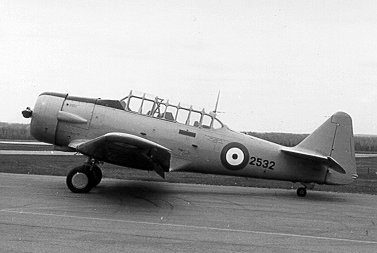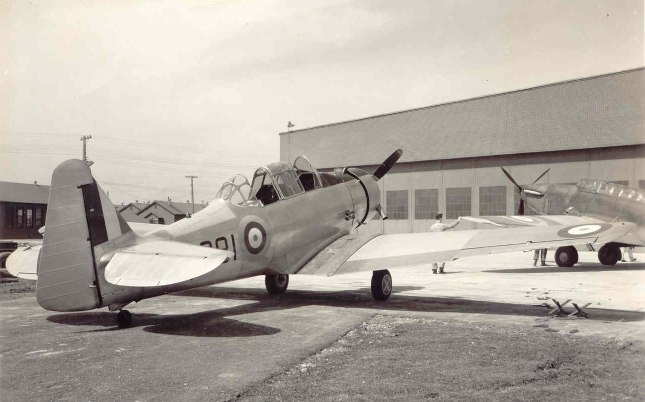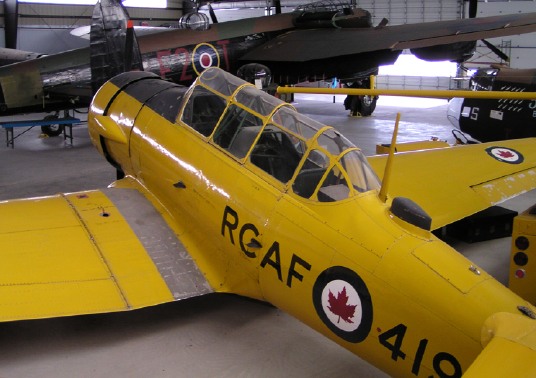 BCATP
BCATP  |
Lancaster
|
Media
|
Lancaster
|
Media
 BCATP
BCATP  |
Lancaster
|
Media
|
Lancaster
|
Media
Museum Collections
Aircraft in the Collection
Aircraft of the BCATP
|
During World War II, and for some years afterwards, the distinctive snarl of the Harvard was a familiar sound in Canadian skies. Recognized as one of the most outstanding aircraft of its era, it was chosen as the advanced single-engine trainer for the British Commonwealth Air Training Plan. As such, it served as a transitional aircraft upon which pilots who had learned the basics by flying Tiger Moths, Fleet Fawns, or Cornells would advance their skills so that they were prepared to fly combat aircraft such as the legendary Hurricanes and Spitfires.
|

|
The Harvard was an American design, known in that country as the AT-6 Texan. A total of 3350 were produced in Canada, more than any other type. Beginning in 1940, 2800 were built by Noorduyn in Montreal and during the 1950's another 550 were constructed by Canadian Car and Foundry.
Well suited to its training role, the Harvard was a high performance aircraft which had enough bad habits to teach inexperienced pilots to respect the even more powerful fighters they would soon be flying. Strong, but unforgiving, it required a delicate touch to maintain the proper attitude upon take off and landing. Following the war the Royal Canadian Air Force kept the Harvard on strength until 1966, training pilots for their duties with NATO. A training base in Claresholm, just south of Nanton, utilized the aircraft for this purpose during the 1950's.
The distinctive snarl of the Harvard is produce by its 600 horsepower Pratt & Whitney engine together with its nine foot propeller which, when in fine pitch at high rpm, approaches sonic speeds.

Harvard Mk IV #20419 was built in Canada in 1952. It is very similar to the wartime Mk II's although this version features an improved cockpit canopy and a larger fuel capacity. It initially served at #2 Advanced Flying School at MacDonald, Manitoba and Portage La Prairie, Manitoba. In 1957 it was transferred to #4 Flying Training School at Penhold, Alberta. On 9 October, 1962 #20419 suffered Category "A" damage when it made a forced landing one mile west of Penhold after an engine failure while commencing an overshoot. The aircraft was struck off strength on 8 November, 1962. It was acquired by the Canadian Museum of Flight and Transportation in Langley, British Columbia and in 1996, the aircraft became the property of the Bomber Command Museum of Canada. |

|
|
Engine: Wingspan: Length: Height: Weight (empty): Weight (gross): Cruising speed: Maximum speed: Rate of Climb: Service ceiling: Range: |
Pratt & Whitney R-1340-AN-1 Wasp, 600 hp, radial 42 feet 0.5 inches (12.8 m) 28 feet 11 inches (8.8 m) 11 feet 9 inches (3.5 m) 3995 pounds (1812 kg) 5235 pounds (2375 kg) 140 miles per hour (225 km/h) 180 miles per hour (290 km/h) 1300 feet per minute (396 m/min.) 22 000 feet (6710 m) 710 miles (1143 km) |